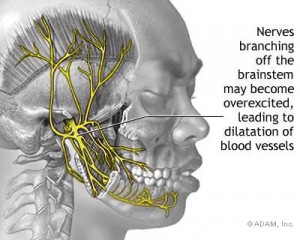Borderline Personality Disorder and Migraine Headaches
Borderline Personality Disorder and Migraine
Abstract and Introduction
Abstract
Background: Borderline personality disorder (BPD) may be disproportionately common in the migraine patient population, but specific migraine features in the BPD subgroup remain incompletely characterized.
Purpose: To define more clearly the clinical characteristics of migraine patients with BPD, to evaluate their clinical response to aggressive headache management, and to assess the sensitivity of an instrument intended to screen for the presence of BPD.
Methods: We evaluated 50 consecutive patients with migraine and previously documented BPD, 50 consecutive patients with migraine of all types and no history of BPD, and 50 patients with migraine and no history of BPD matched to the first group for age, gender, and headache frequency. We assessed a variety of demographic and clinical variables at baseline, and to all patients we administered the McLean Screening Instrument for Borderline Personality Disorder (MSI-BPD). Patients in Groups 1 and 3 were treated for their headaches via a uniform pharmacologic management program. Treatment outcome was assessed after 6 months.
Results: In this series of migraine patients, coexisting BPD was associated with female gender, more pervasive headache, more migraine-related disability, a higher prevalence of medication overuse headache, more unscheduled visits for acute migraine treatment, a higher prevalence of active, self-reported depression, and a lower likelihood of responding to pharmacologic therapy intended for headache management. The MSI-BPD was insensitive in detecting BPD.
Conclusions: Migraine patients with coexisting BPD are clinically distinct from the migraine patient population as a whole; in particular, they are more severely affected by their headache disorder and more treatment refractory. Simple screening instruments used to detect BPD may be ineffective in the headache clinic setting.
Introduction
Borderline personality disorder (BPD) is characterized by impulsivity, unstable and intense interpersonal relationships, an unstable self-image, frantic efforts to avoid perceived abandonment, inappropriate anger, self-destructive threats and behavior, transient paranoid ideation, dissociative symptoms, affective instability, or some combination thereof.[1] BPD is relatively common in the general population, with a reported prevalence of about 2%, and BPD appears to be disproportionately prevalent in the migraine patient population.[2,3] The treatment of migraine in patients with BPD can be effortful, costly, and ultimately fruitless. In this study, we sought to characterize more clearly the clinical characteristics of migraine in BPD patients presenting to our university-based headache clinic, to determine the prevalence of self-reported depression in those patients, to evaluate the impact of pharmacologic treatment prescribed to ameliorate their headaches, and to assess the sensitivity of a self-report instrument intended to screen for the presence of BPD.




One Comment
Pingback: